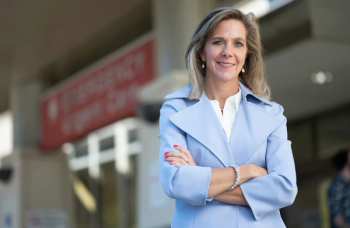
Hospital recovery at risk if Congress doesn’t extend telehealth, Fitch Ratings says
Federal waivers for telehealth programs, including hospital-at-home programs, are slated to expire Dec. 31. Fitch says failing to extend home hospital programs would be a financial blow to nonprofit hospitals.
With just a little more than a month before federal waivers for telehealth programs expire, healthcare advocates are getting increasingly antsy for Congress to act.
The government eased restrictions on telehealth programs through the COVID-19 pandemic, but those waivers expire at the end of the year. Lawmakers in both parties and the Biden administration have shown support for telehealth programs, but
Those waivers don’t just cover patients seeing doctors and other providers virtually. The waivers also cover
If Congress doesn’t extend telehealth and home hospital programs, the nonprofit hospital sector would suffer a damaging financial blow, Fitch Ratings said Thursday.
A pause on home hospital and telehealth programs “could threaten the U.S. not-for-profit (NFP) hospital sector’s nascent financial recovery,” Fitch said.
“Hospitals have increasingly incorporated these services into their operations, which has helped to alleviate revenue and expense pressures,” Fitch said in a note Thursday.
Health systems have demonstrated that they can deliver acute care in the home effectively and safely, Fitch noted.
Nationwide, 373 hospitals from 139 health systems have been approved to launch hospital-at-home programs through Nov. 6, according to
Hospitals are seeing more revenue and delivering better patient care through telehealth programs, Fitch said.
“Telehealth reduces hospital costs and provides critical, additional revenue by increasing patient volumes and broadening access, especially in rural areas, where physician coverage is limited,” Fitch said.
Caroline Yang, MD, associate medical director of Mass General Brigham Healthcare at Home, told Chief Healthcare Executive®
“Delivering care in home hospitals was so different than what we have now,” Yang said. “And I think the exciting thing is just that we're constantly exploring and kind of innovating or trying new things to see what works and what's not working, and then growing from there.”
Nonprofit hospitals have seen improvements in their financial performance, but the gains have been modest, Fitch notes. Hospitals experienced their worst year financially in 2022. In 2023, the median operating margin rose to 0.4%, up from 0.2% the previous year, according to Fitch. Hospitals should see more improvement, but it may be relatively small, Fitch suggests.
“We expect ongoing stresses will keep margins compressed relative to pre-pandemic levels of 2%-3%, even as volumes remain strong,” Fitch says.
The federal government has agreed to
Fitch also expects hospitals will continue to contend with high labor costs, although cost pressures have eased from the height of the pandemic, when health systems relied more heavily on staffing agencies.
Hospitals and other healthcare trade groups are pushing Congress to address
Healthcare groups are also pressing lawmakers to








































